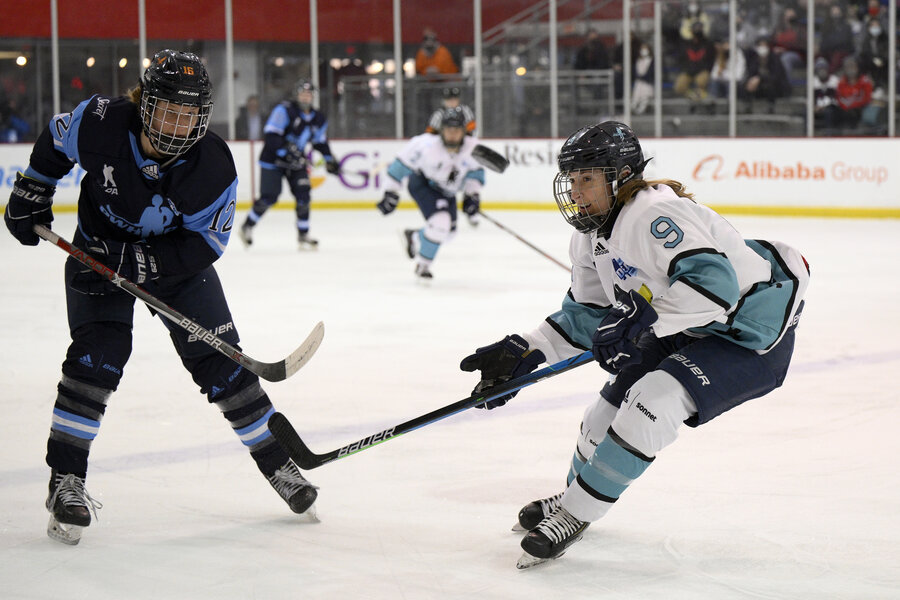Arlington, Va.
Megan Grenon stretched outside the rink before a rare showcase of women’s hockey in the Washington, D.C, area when a young girl approached with her parents.
“Are you a hockey player? Are you playing today?” the girl asked.
“Yeah,” Ms. Grenon replied. “Are you here to watch me?”
Ms. Grenon plays for Calgary with the Professional Women’s Hockey Players Association, which has set a goal of establishing a sustainable professional league in North America after years without one. Ms. Grenon said she would be wearing No. 5 in white that day, and the young girl jumped up and down in excitement.
“You can cheer for me,” Ms. Grenon said. “You can cheer for whoever you want.”
Scenes like that are playing out more often across the country since the U.S. women’s national team won gold at the 2018 Olympics and generated more exposure for the sport. There will be NHL playoff hockey starting next week in Dallas, Tampa, Nashville, Raleigh, and Washington, D.C., where girls hockey has expanded over the past decade but still lags far behind traditional hotbeds like Massachusetts, Minnesota, Wisconsin, and Michigan.
Because of logistical hurdles, from a shortage of rinks and ice time to a lack of college and varsity high school programs and the need for more education, growing girls hockey in nontraditional markets remains a challenge. The 3,177 female players aged 18 and younger registered by USA Hockey in Texas, Florida, Tennessee, North Carolina, Maryland, Virginia, and the District of Columbia combined is still fewer than in Wisconsin alone.
“It’s been like a slow buildup,” said Kush Sidhu, director and under-19 college prep team coach for the only top-tier junior women’s hockey team in the Washington area. “It’s always hard. It’s a struggle, I guess, but it’s a good struggle and we’re happy to do our part.”
The NHL’s Dallas Stars, Tampa Bay Lightning, Carolina Hurricanes, Nashville Predators, and Washington Capitals are also trying to do their part to get participation numbers up in those areas – and similar efforts are taking place in Arizona and elsewhere around the league. The number of girls playing hockey in those states is up 71.3% from 2011 to 2021.
But the raw numbers still show a need for growth. Minnesota reported almost 13,000 girls playing hockey last year, and that total reaches 28,206 combined with Massachusetts, Wisconsin, and Michigan.
USA Hockey regional manager of female hockey Kristen Wright, who spent five years as manager of girls player development, is proud of the sport’s rapid growth at the youth level in nontraditional markets and thinks it can be even better with more exposure and ice time.
“Some of the challenges that come with that are female role models: Convincing girls that hockey is for them,” Ms. Wright said. “They need to see it. You really need to see different female hockey players, have female coaches, and have that engagement there. And the other challenge, I would say, in some of those markets, there just aren’t as many ice rinks, so now instead of it being a soccer field that’s attached to your middle school or your elementary school, where you learned to run and kick a ball, well, you need to go to an ice rink.”
Nashville director of amateur hockey Kristen Bowness, Tampa Bay hockey development ambassador Kelley Steadman, and Carolina girls’ and women’s youth and amateur hockey specialist Alyssa Gagliardi all cited a lack of ice rinks as one of the major hurdles. While watching a women’s hockey event at the Washington Capitals practice facility last month, Mr. Sidhu echoed those concerns

